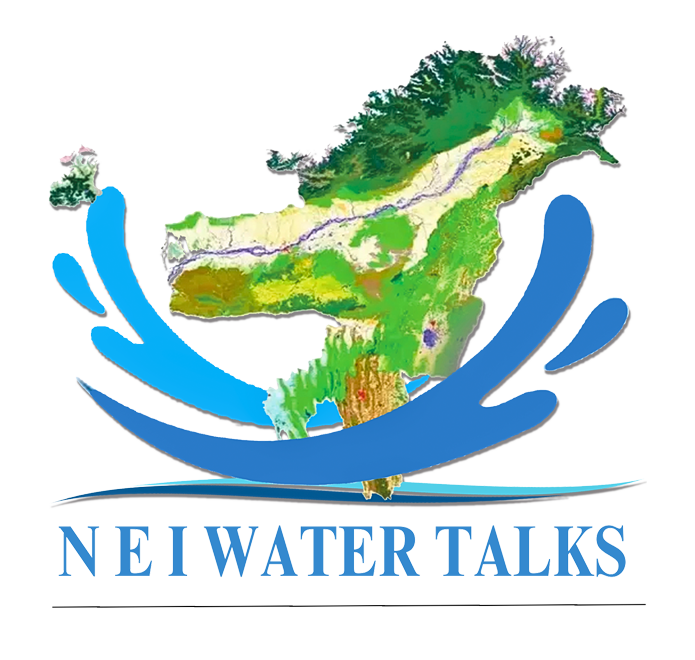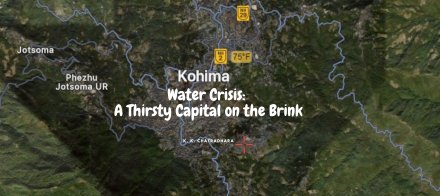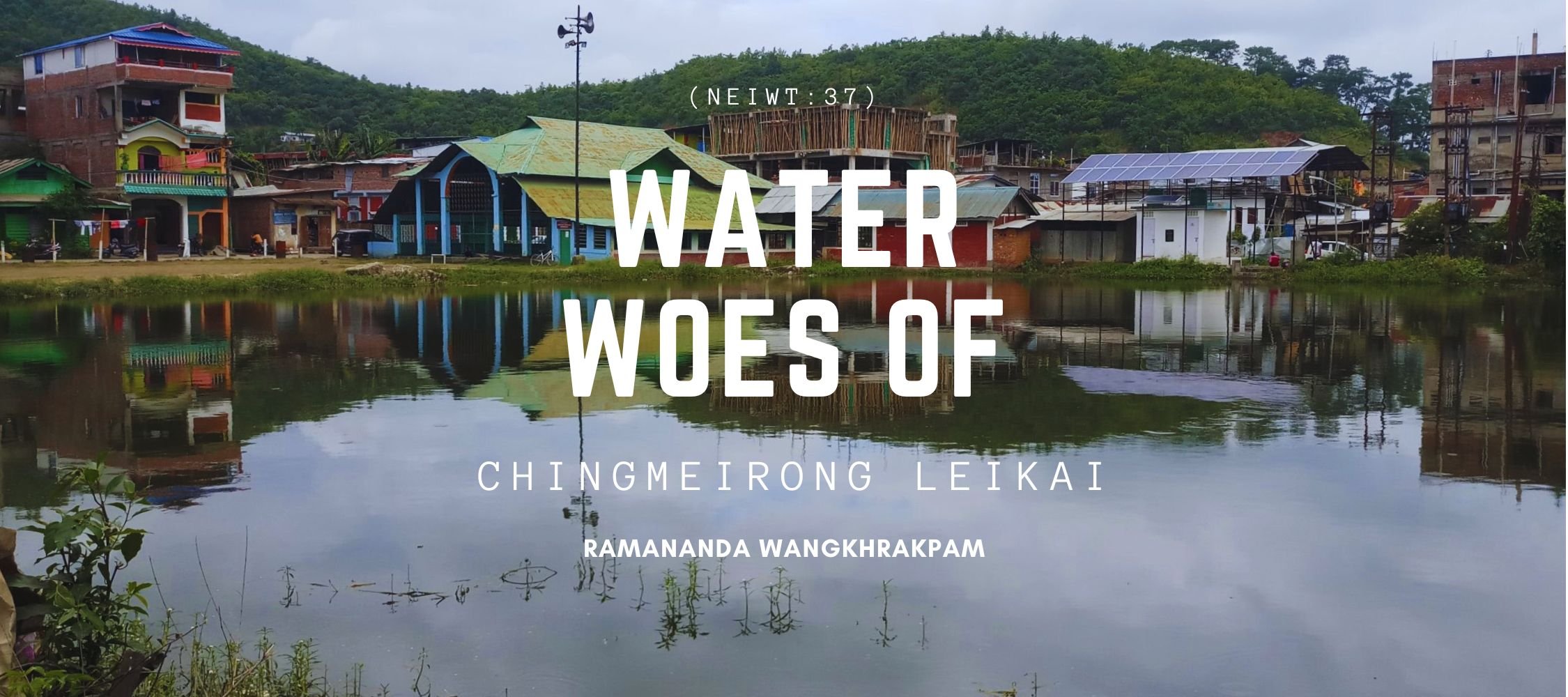 |
Chingmeirong Maning Leikai, a small neighbourhood of the Imphal East district, is located amidst an expanding urban maze; it is surrounded by the Manipur State Assembly building, the High Court, Inter-State Bus Terminus, educational institutions, hospitals, restaurants, and countless shops. It is an old neighbourhood and represents a typical Meitei settlement known as leikai. Each leikai has a well-defined boundary with a sizeable population.
Before the arrival of the British in the ancient kingdom of Manipur, the valley had a well organised water supply system in the capital of Imphal – people used to meet their daily water needs, including drinking water, largely from the natural sources – pukhri (tanks), lakes and rivers. It was a kind of community-based water management system. Traditionally, almost all leikai settlements will have a community pond known as pukhri from where the water requirement of that leikai is met. Besides, there will be ponds built for special purposes such as, lai pukhri, (Lai means god/ goddess and pukhri means pond).
Historical records show that pukhris of various sizes were dug by the reigning kings in order to assure regular supply of water to the inhabitants of Imphal1. It appears King Chourajit had dug the Chingmeirong tank in 1809. Another tank at Thangmeiband, the immediate neighbouring leikai, was created during the reign of King Surchandra in 1888 and 1889. A network of such ponds still exists and the ponds are used in many leikais, despite the installation of the piped water in several localities.
King Chourajit may have also dug the Chingmeirong Maning Leikai pukhri achouba (big pond); the lai pukhri (pond of God) of the Chingmeirong Maning Leikai was very clean back in the day and many travellers from far off villages would make a pit stop to drink water from the pond. Most of the households also used the pukhri achouba for drinking purposes only. However, many households that lived a little away from the big pond, preferred to use water from the swamps and wetlands for drinking and other purposes. The lai pukhri, which is nearer, also served as a source of drinking water for many in its vicinity.
The number of households was much less those days, and the people living in the area were dependent solely on these traditional ponds and wetlands for drinking water and meeting other domestic needs. The swampy land known as pat was also a source of other aquatic resources such as fish, snails, eel, edible vegetables and aquatic herbs. Each family, both from Chingmeirong and Thangmeiband, used to demarcate a small water plot in the pat for their personal use. There were no conflicts in the use of these resources from the pat. This area was also the grazing ground for cattle and other small ruminants, as well as the recreation space for youngsters and elders alike for a refreshing swim or an impromptu picnic.
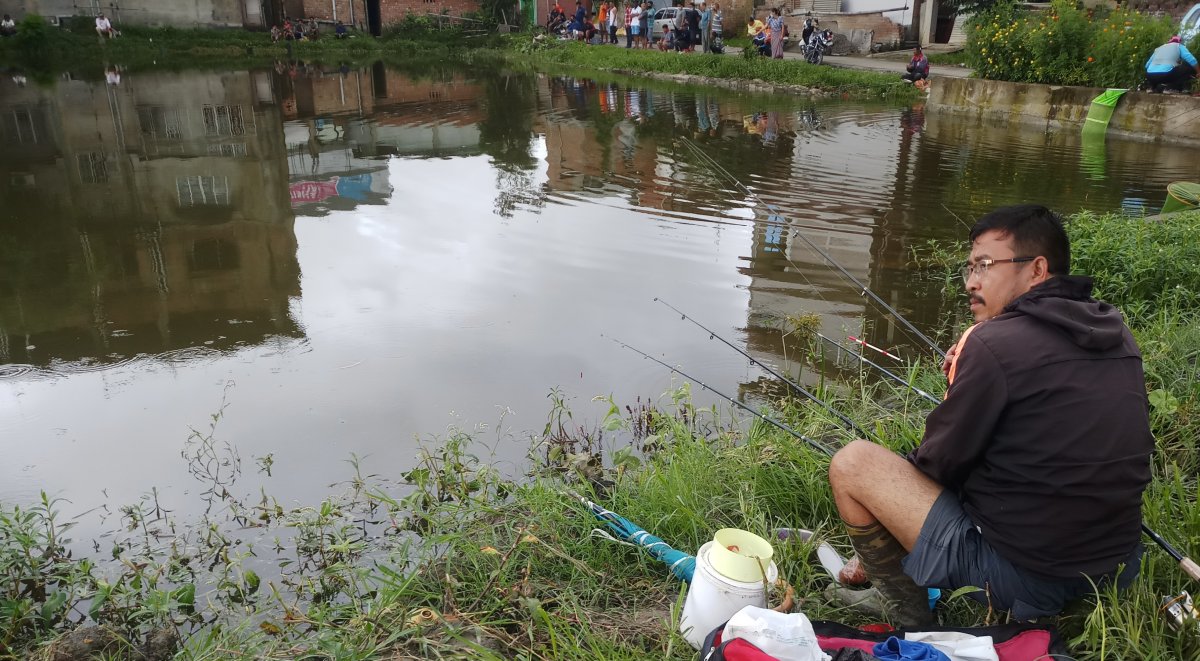
Moreover, as the modern infrastructure development activities and the process of urbanisation intensified, many ecologically sensitive areas got destroyed. For example, land-filling of the wetlands for construction of the Assembly building has completely altered the water regime in the area, which resulted in periodic flooding of the two leikais of Chingmeirong and Thangmeiband. Now, even with a slightly heavy rainfall, the households nearby are flooded.
Hoirou pukhri located at Lilasing Khongnangkhong was also another source of water for the inhabitants of Chingmeirong and Thangmeiband. But then, even this pukhri has been land-filled to pave way for the construction of bungalows for the people serving in the Assembly complex thereby depriving the nearby inhabitants of an important source of water with no proper compensation. Another source of water was the tank/ pukhri located at the Tribal Research Institute in the Adimjati Complex, which was believed to be under the patronage of Lord Marjing. Till today, whenever there is a Lai Haraoba, the ritual is incomplete without the water from this pukhri at the Adimjati Complex. This pukhri is supposedly a cultural heritage site, according to government documents. Additionally, since the pukhri is now located inside the institution, the access of local people to water has been restricted.
Another lesser known but completely at ruins is a water body towards the southern side of the leikai, which is now under threat of being extinct as the surrounding houses have started encroaching on the water bodies. However, the leikai authority has begun to look into this matter.
It is also the women whose livelihood depended on the pat. Edible plants and herbs like komprek, thangjing, kolamni, peruk, phunil, isingkundo, tharo, ikaithabi, isingkambong, etc were abundant in all seasons. Different varieties of fishes, snails and eels were also available throughout the year. Besides keeping some for personal consumption, whatever collected was sold instantly. No one extracted more than they could sell, and the pat acted as their cold-storage to be collected and sold the next day and so on and so forth.
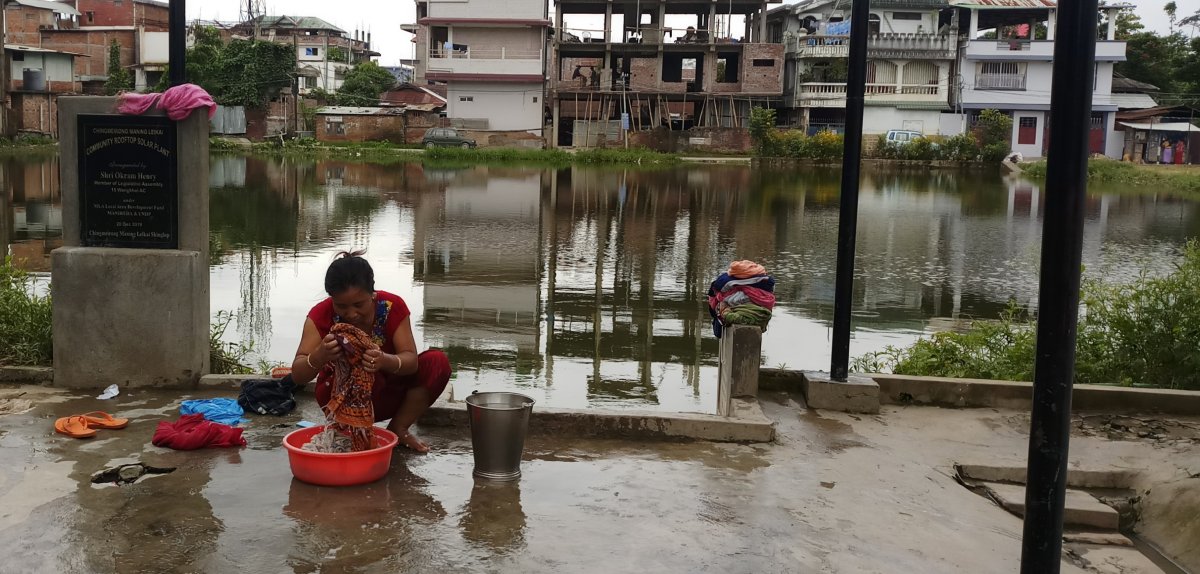
Unfortunately, for many the piped water supply didn’t bring much respite in their daily drudgery for securing water, especially for women who spent a lot of time in search of water. In some places, pipe lines were laid out but because of inadequate pressure, water would not reach those areas. This worsened the water insecurity situation in many localities, including Chingmeirong. Several households had neither access to piped water nor to the traditional sources of water, which had been left to disuse. Inhabitants of Chingmeirong had to walk till Khuman Lampak, a distance of a kilometre or so, to fetch the piped water. During the lean season both the water of Pukhri Achouba and Lai Pukhri became unfit for consumption, though they were still used for other household chores, including washing. The French-financed Imphal Sewerage Project, which included tunnelling works and laying of pipelines, had put a complete halt to the piped water services in many localities, including Chingmeirong since 2008, and it was only in March 2018 that piped water was restored at Chingmeirong. For about a decade, the families of the Chingmeirong Leikai had suffered a lot without potable water along with the destruction and disappearance of the traditional water sources.
Recently, the Chingmeirong Maning Leikai shinglup, the village authority, has launched a campaign for making people aware of the importance of these ancient water conservation structures and community management of traditional water bodies in modern times. They are also working with the state department of environment to promote water harvesting for meeting household needs as well as use this as part of a climate adaptation strategy with an understanding that urban water bodies, big and small, not only help in controlling micro level climate but also help mitigate water stress and drought. Manipur receives a fair amount of rainfall but there is no consistent system of rainwater harvesting. There exists a traditional practice of harvesting by individual houses but mainly those who have tin roofs. Some of them have gone to the extent of installing underground tanks for rain water harvesting, which may be beneficial and useful for some time. For that, however, one must have some space in their households, and money to build such structures. The government may consider giving loans for such households to harness rain water sustainably. The shinglup has also drawn up plans to create a park all around the big pukhri and beautify the area so that it becomes a place for recreation and leisure, including walks for young and old.
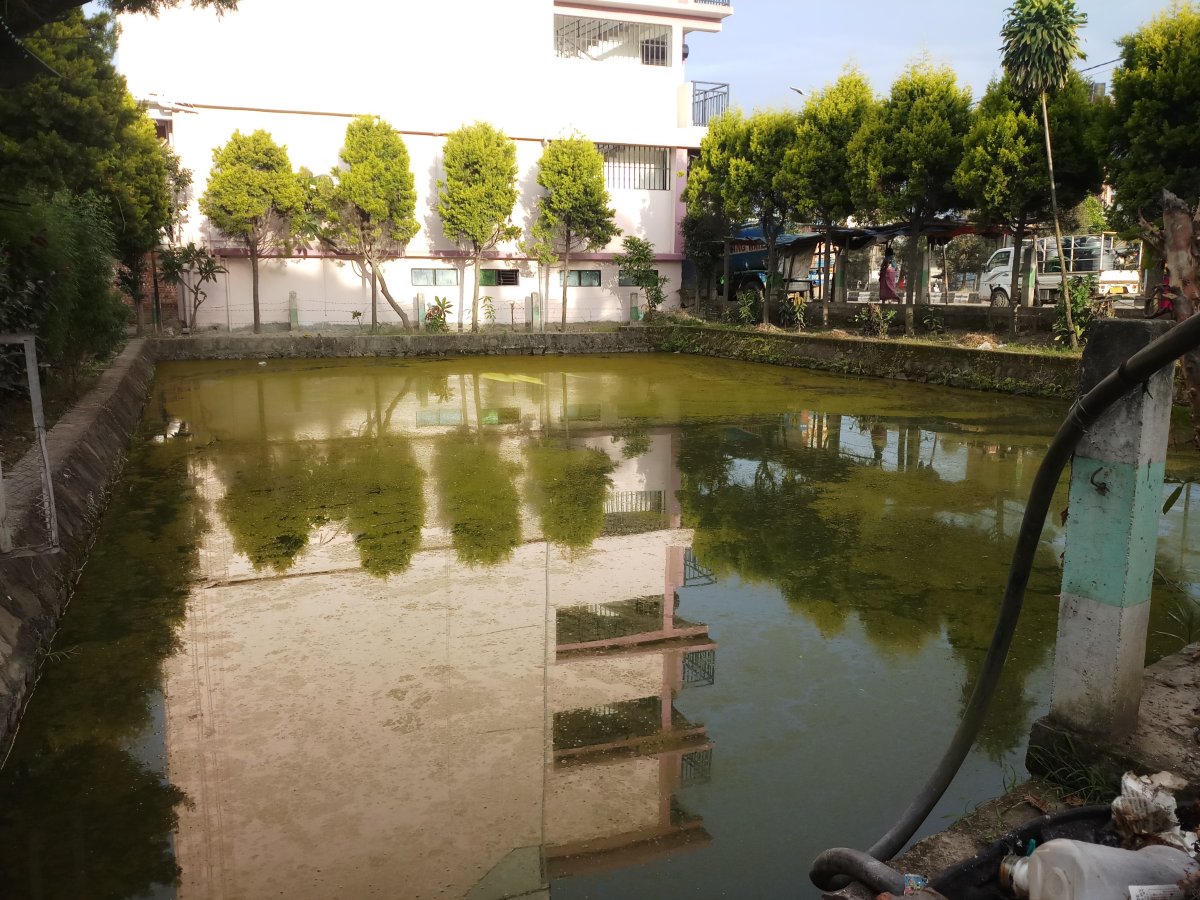
The Government of Manipur was at least considering to make some improvisation on the issue of amending the Water Supply Act of the State of Manipur 1992; it was pointed out that the amendments should be forward-looking and bring some procedural changes in the water supply system processes, besides many others, such as:
Incorporating the rights of citizens, as not only being merely customers served by the water delivery system, but as key stakeholders with a right to safe, sufficient and 24X7 water supply. By acknowledging the right of the citizens, the water department will recognise and endorse a shift in the role, from being sole determinants of all water-related policies, planning and implementation, to being one of important players in the water services operational area;
Encouraging and facilitating synergistic partnerships between the state government departments, local bodies, primary stakeholders and representatives of Manipuri people with a shared goal of building sustainable water service systems;
Fortunately, cities around the country are finding creative ways to keep their water systems out of corporate control. Municipal water is heavily regulated. The water that we get through the pipes may come from nearby rivers or lakes, and then goes through a water treatment plant. One doesn’t really know how safe the drinking water is. For those who get their water from aquifers (you would know this if you have a well on your property), their water most likely would be clean. Nature has a way of cleansing rainwater and surface water. The water that seeps through the ground gets filtered by the dirt, rocks, sand and other subsurface contents to provide clean aquifers.
References:
Geolocation is 24.826247, 93.944047
